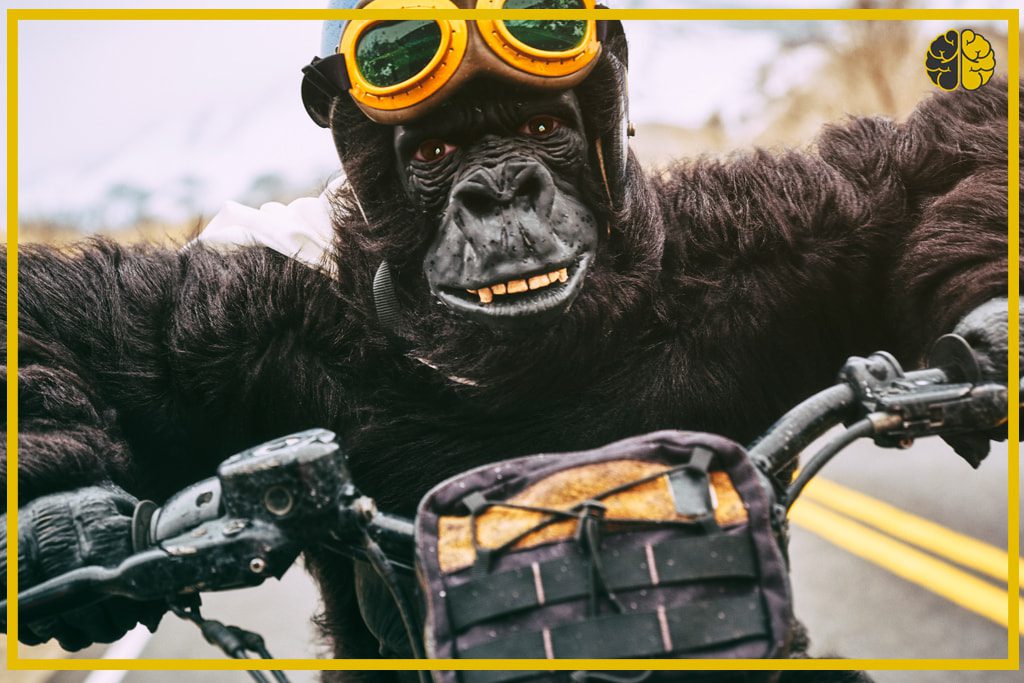The gorilla was chasing me. But I had a four-second head start.
Ninety minutes into a bike ride, my handlebars were so hot that I couldn’t change my hand position. I could smell the melting asphalt and feel the sun beating hard on my back.
The fields were full of baled hay, waiting to be collected by the farmers—but for me, the hay was already in the barn. My workout was done. I’d put out PR-levels of wattage, smashed a few PRs and climbed the leaderboard on some local Strava segments. I’d already won the day.
I had one tough climb left on my ride home. I didn’t plan to attack it. But Strava had different ideas: The app beeped on my bike computer to let me know that a race segment was approaching. I didn’t change my pace. The app beeped again to start the countdown: 100 m until the start, 50 m, 10 … and I held my recovery pace. I didn’t take off at the bottom of the climb.
But then things get blurry. I glanced at my bike computer. I saw that I had a four-second lead on my best time on that segment. I immediately notched up a gear and started pushing hard.
When you’re locked into maximum effort, you don’t process full sentences in your head. Heart rate spiking, wattage skyrocketing—you think in single words and pictures. And for the next 40 seconds, as I buried my body to climb that hill faster, these were the pictures I saw:
Newspaper—gorilla.
Two Kinds of Motivation
I won’t leave you in suspense. I missed a PR by a second. But I totally committed to the effort, destroyed any energy I had left and made myself faster for another day.
But what motivated me to go all-in after I’d already decided to coast? What changed my mind from “nah” to “hell yeah!” in a split second?
The secret is in an old joke about a newspaper ad for weight loss. I won’t get into the exact details, but the short version is that people can be motivated to chase something or to push hard because they’re already winning. One form of motivation is often much more powerful than the other.
On the bike, I often chase a time I want. Seeing the goal pulls me forward.
That day, I decided to push because I had a lead. I was four seconds ahead of the gorilla that was chasing me, and that drove me forward.
How many people quit a race when they have momentum and a lead?
Now answer that question again, but apply it to a client in your gym.
Fitness Coach or Behavior Modifier? (Both)
In this series, I’m going to tell you how to motivate people.
We’re going to talk about the importance of clearly defined goals, why it’s important to feel as if the goal is really close and the power of a head start. I’m going to tell you how this affects adherence and retention in your gym and how improving those things will make you money. Then I’m going to share some data from live gyms to prove it.
The secrets to long-term progress for your clients don’t come from the world of exercise science. They really come from behavioral science.
We need to break goals down into steps.
We need to group steps into habits.
We need to turn habits into behaviors.
Then we can turn behavior into change.
In this series, I’ll tell you how to do it.
Other Media in This Series
How to Motivate People: The Start
How to Motivate People Through “The Dip”
Motivation: The Dark Secret

